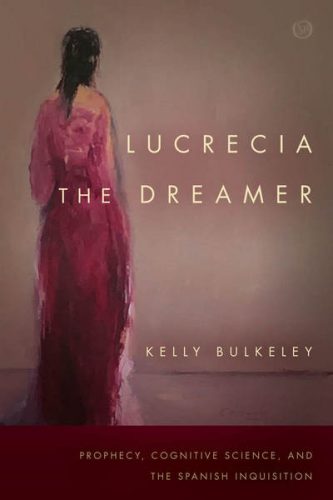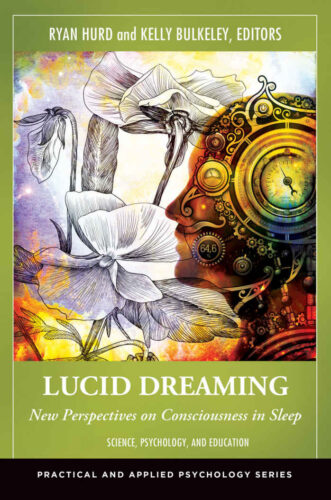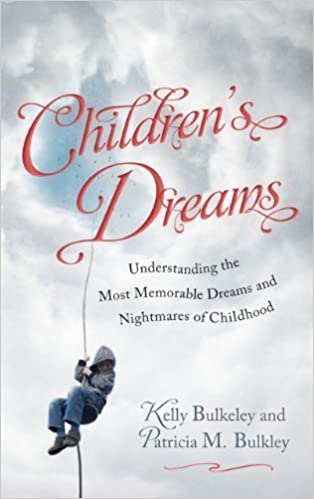 Big Dreams: The Science of Dreaming and the Origins of Religion (2016)
Big Dreams: The Science of Dreaming and the Origins of Religion (2016)
Purchase This Book
Description
“Big dreams” are rare but highly memorable dream experiences that make a strong and lasting impact on the dreamer’s waking awareness. Moving far beyond “I forgot to study and the finals are today” and other common scenarios, such dreams can include vivid imagery, intense emotions, fantastic characters, and an uncanny sense of being connected to forces beyond one’s ordinary dreaming mind. In Big Dreams, Kelly Bulkeley provides the first full-scale cognitive scientific analysis of such dreams, putting forth an original theory about their formation, function, and meaning.
“It is in dreams that one can catch sight of the most fundamental and stable symbolisms of humanity passing from the ‘cosmic’ function to the ‘psychic’ function.”
Paul Ricoeur, The Symbolism of Evil, 1967
Big dreams have played significant roles in religious and cultural history, but because of their infrequent occurrence and fantastical features, they have rarely been studied in light of modern science. We know a great deal about the religious manifestations of big dreams throughout history and around the world, but until now that cross-cultural knowledge has never been integrated with scientific research on their psychological roots in the brain-mind system. In Big Dreams, Bulkeley puts a classic psychological thesis to the scientific test by clarifying and improving it with better data, sharper analysis, and a broader evolutionary framework. He brings evidence from multiple sources, shows patterns of similarity and difference, questions prior assumptions, and provides predictive models that can be applied to new sets of data. The notion of a connection between dreaming and religion has always been intuitively compelling; Big Dreams transforms it into a solid premise of religious studies and brain-mind science.
Combining evidence from religious studies, psychology, anthropology, evolutionary biology, and neuroscience, Big Dreams makes a compelling argument that big dreams are a primal wellspring of religious experience. They represent an innate, neurologically hard-wired capacity of our species that regularly provokes greater self-awareness, creativity, and insight into the existential challenges and spiritual potentials of human life.
Table of Contents
Introduction
Section I. Sleep
1. The evolution of sleep
2. The brain’s paradoxical activities in sleep
3. The role of sleep in human health and development
4. Cultural practices of sleep through history
Section II. Ordinary Dreaming
5. Dream recall
6. Patterns in form and content
7. Continuities between dreaming and waking life
8. Discontinuities and metaphors
Section III. Big Dreams
9. Aggressive
10. Sexual
11. Gravitational
12. Mystical
Section IV. Religious Experiences
13. Demonic attack
14. Prophetic vision
15. Ritual healing
16. Contemplative practice
Conclusion
Appendix: Word search methods in the study of dreams
Index
Comments and Reviews
“William James said that ‘white crows’ and ‘mystics’—the anomalous and the extreme—helped us to understand the common and the ordinary in religious life. Recent claims have reversed this insight, dwelling on the ordinary and the everyday and writing off the extraordinary as statistical blips or ‘anecdotes.’ Kelly Bulkeley draws on a lifetime of erudition and his massive digital database to return us to the extreme cases, the ‘black swans’ of ‘big dreams,’ but only after throwing much light on everything from the evolution of the brain and the neurochemistry of sleeping to the adaptiveness, meaningfulness, and playfulness of dreaming. Dreams, it turns out, are not expressions of random neuronic stupidity. To the extent that they encourage us to imagine the possible, they are some of the deepest wellsprings of religious experience and the ‘metacognitive potentials of human consciousness’ itself.”
Jeffrey J. Kripal, Rice University, author of Comparing Religions: Coming to Terms.
“Bulkeley’s erudite volume illuminates perspectives about dreams from the Upanishads through Thomas Aquinas, Charles Darwin, and Mircea Eliade to modern neuroscience and Dilbert. These lead to Bulkeley’s own major ideas of dreams as play, and the distinction between the continuity of ordinary dreams versus the discontinuity of big dreams. Novel and thought-provoking—I highly recommend it!”
Deirdre Barrett, Harvard Medical School, author of The Committee of Sleep.
 Lucrecia the Dreamer: Prophecy, Cognitive Science, and the Spanish Inquisition
Lucrecia the Dreamer: Prophecy, Cognitive Science, and the Spanish Inquisition


 Lucid Dreaming: New Perspectives on Consciousness in Sleep (2014)
Lucid Dreaming: New Perspectives on Consciousness in Sleep (2014) Children’s Dreams: Understanding the Most Memorable Dreams and Nightmares of Childhood (2012)
Children’s Dreams: Understanding the Most Memorable Dreams and Nightmares of Childhood (2012)